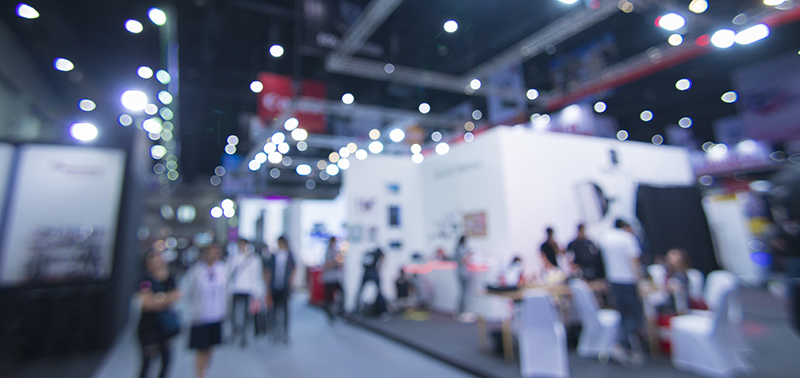Trish Lilly first heard talk of the new coronavirus in late December, about a month before her organization, the National Association of Wholesaler-Distributors (NAW), held its annual Executive Summit in Washington, D.C.
At the time, the coronavirus hadn’t reached global pandemic status, and its primary disruption was shutting down factories in Wuhan, China and snarling supply chains. So when wholesale distribution leaders gathered for their conference in late January, there might have been some chatter about an airborne virus wreaking havoc a world away in China, but it was hardly top of mind.
“It wasn’t a conversation at that point,” says Lilly, chief thought leadership officer and executive director of NAW’s Institute for Distribution Excellence. “Had we met a week or two later, it would probably have been a bigger topic. We were lucky to meet in late January.”
Lucky indeed. NAW’s signature event went on as planned, but it was among the last of the large distribution conferences to be held in 2020.
Initially, the coronavirus disruption was expected to be limited to international travel — especially into China — and maybe some extended supply chain snags. When COVID-19 grew into a global pandemic, however, much of everyday, normal life in the U.S. came to an end. One victim was the large-scale gathering. Industry conferences and conventions were called off beginning in mid-March and continue to get scrapped.
“Everyone that is moving forward does recognize that they might have to pivot very quickly to virtual, so they’re planning on all levels,” Lilly says.
Granted, among the myriad business disruptions to wholesale distribution over the past three months, the loss of in-person gatherings ranks well below furloughs, layoffs and hits to distributors’ top and bottom lines. But these industry gatherings also represent a place where executives and rank-and-file employees alike can network over dinner or a cocktail, share best practices, hear top-notch motivational speakers, absorb the latest economic trends and much more.
With some sense of new normalcy resuming, the goal now is for industry associations — as well as public companies holding shareholder meetings — to decide between live and virtual events as well as how to proceed down their chosen path.
“The good thing is, we’ve moved out of the crisis stage, and now we’re all in the action stage, whatever that might mean,” Lilly says. “And it varies by company and by association.”
Zooming in on the New Normal
The action stage for many associations and companies meant pivoting to a virtual event. Gone are the days — at least for now — of gathering hundreds of distributor employees in a crowded convention hall and letting them regale each other over a happy hour beverage or in an intimate roundtable setting.
And as associations looked to move their previously face-to-face meetings to Zoom or Webex or Skype, they began reaching out to NAW for help on deciding how to proceed. Lilly organized regular calls so association leaders could bounce ideas off each other and take them back to their boards.
“We recognize that this was an opportunity for association executives to get together, share ideas, ask questions, discuss best practices,” Lilly says. “We went out to members and asked who would like to join with their peers during this pandemic to discuss events moving forward, what they were doing with employees, how telecommuting was going. It was an opportunity to bring all the right people together to share their best ideas.”
One of the first organizations to pivot to virtual was the National Association of Electrical Distributors (NAED), St. Louis, whose annual conference was supposed to be held in Philadelphia in early May. The association was forced to adapt its traditional multiday, in-person conference to a virtual event that took place in about four hours and entirely online.
“The biggest challenge for us, once we made the decision to pivot the national meeting to a virtual version, was how we would adjust the meeting’s format to match an online style,” says Tom Naber, NAED’s president and CEO. “And second, how would we execute such a production that we had never done over the internet before? We ended up using all our same speakers, but they were able to adjust their presentations to address the current challenges making the event very relevant to our members.”
Another organization with a little more time to plan was Wayne, Pennsylvania-based buying group AD. In early June, the organization announced that its slate of eight North American sector meetings would take place virtually from mid-September to mid-November.
Planning the move for all these events was challenging, says Peggy Penjuke, marketing manager, AD Electrical, but the organization engaged stakeholders to ensure the new-look meetings would retain some of the flavor — including education sessions, trade show elements, keynote speeches and more — of the in-person versions.
“Nothing beats an in-person meeting, so we did a lot of talking internally about making sure it’s still a valuable event for our members and suppliers,” Penjuke says. “Our meetings are essentially a part of our brand and who we are at AD. The North American meetings are something that everyone looks forward to. This is the new norm for right now, but we didn’t want to cancel. Instead, we were able to come up with a great agenda that fits all industries.”
Pros and Cons of Virtual Events
Virtual events, at the moment, are much safer than in-person events — even those that adhere to strict social distancing. Virtual events also are cheaper to operate and less expensive for companies to attend, so theoretically, a distributor could send more employees to an online session about, say, transforming your sales model.
But they also have plenty of downsides when it comes to gatherings for an inherently social industry. Distribution employees like to shake each other’s hands, look their business counterparts in the eye and talk shop. The industry is built on personal interaction.
“With a virtual format, the biggest con is the networking that’s lost,” Lilly says. “There are some platforms that are coming out that provide for that, and some folks have done meetings and incorporated virtual happy hours into their meetings. There are opportunities, but the key element of networking is, I think, the biggest challenge.”
Another issue — perhaps the biggest one associations face right now — is the loss of revenue from not having their annual conference. They can’t charge the same registration fees, hold golf tournaments, conduct charity auctions. For many, it’s the largest line-item in their budget, and asking distributors to pay for a Zoom seminar or a live-streamed keynote speaker would be a bridge too far, Lilly says.
“Monetizing a virtual event is a very big issue because when this started, associations and many groups started providing as much content and information as they could without fees,” she says. “People expect that virtual should be free or inexpensive. Associations need to make up lost revenue that they’re experiencing in dues income and meeting income and education income. So how do you bring in the revenue through a virtual event? It’s a big issue right now that we’re all struggling with.”
The thought of losing annual conference revenue is an issue that the Chicago-based Power Transmission Distributors Association (PTDA) has been dealing with, according to Ann Arnott, the organization’s CEO and executive vice president. The group’s Industry Summit, scheduled for October, is still a go for now, and while the organization would take an obvious financial hit, it could weather the financial storm, Arnott says.
“It’s a moneymaker for us, typically,” she says. “Fortunately for us, we are in a phenomenal financial position in that our board has been very conservative, so we have reserves that will carry us through even if we should cancel the Industry Summit and not have any replacement.”
Live Shows Aren’t Dead, Yet
Still, the thought of missing out on a large source of income is distressing, to say the least, and associations that can move forward with their live events in the next few quarters say they will give it a go.
PTDA, for example, is holding out hope that it will host its Industry Summit in Atlanta in just over three months. Still, Arnott knows that even if the association does pull off the event, it will have a much different look and feel.
“It’s not going to be anything like we’ve done in the past,” she says. “There’s no way we’re going to be able to have 110 booths, with 700 people walking around.”
NAW’s Lilly agrees. “With social distancing, meeting rooms won’t look like what they used to look like before,” she says. “People will be ushered into a meeting room, sort of like going into church. You’ll be seated by aisle; you’ll have to exit the room the same way.
“When you do a theater setting or general session, you now have to separate those seats by six feet. Say you had 500 people in a meeting room previously, you might only be able to fit 150 to 200 in that same room, which brings about the space issues. If your members did want to come, you would have to expand your space within the hotel. There are so many things that go into it.”
Arnott says PTDA is now planning the Summit for a second time. The event was mostly ready to go in March when the country went into lockdown. “We had the brochure copy, we had all the speakers selected, we had the scheduled events lined up — pretty much all the decisions were made,” Arnott said. “And now we’re planning it again.”
The second planning session included social distancing and other safety measures. Event organizers had to reconfigure rooms to ensure that attendees could be seated six feet apart, that a bustling trade show floor was downsized, that buffets became boxed lunches.
Those changes are familiar to another large distributor association, Columbus, Ohio-based Heating Air-conditioning & Refrigeration Distributors International (HARDI). The association has the benefit of holding its annual conferences in December and, coincidentally, in the same Atlanta hotel where PTDA is hosting its summit — and HARDI CEO Talbot Gee is cautiously optimistic that the annual conference will occur.
“Being the latest of the wholesale distribution events in December is working in our favor at the moment,” Gee says. “It does also make us a little susceptible to a potential winter backlash if cases re-emerge or there’s not any real progress on vaccines or things like that. So there’s still an inherent risk.”
But HARDI is plowing ahead and will host its annual conference “absent a state, federal or local mandate that would prohibit our ability,” Gee says.
That being said, he adds, HARDI knows that attendance will be lighter than usual because of everything from people’s concerns over being in large gatherings to companies’ cutting travel budgets. Gee also says that HARDI is limiting the amount of detail it releases about the event because things can change, as everyone has learned these past few months.
“It’s not going to look like a normal conference, but we’re going to adhere to our principles of unique content and best-in-class, leadership networking,” he says. “That’s what we’re striving to achieve, but the details on how we achieve it probably won’t even be finalized until several weeks before the conference because we want to make sure it is exactly what the industry needs at that given point in time.”
A Mix of New and Traditional
After quarantines, stay-at-home orders and business travel grounded, what the industry needs right now is a chance to connect, according to John Caplan, president, North America and Europe, Alibaba.com. Virtual trade shows, such as the ones that Alibaba.com is hosting for its buyers and sellers, are one way to do that.
And while Caplan doesn’t think virtual trade shows will ever completely replace live events, he does see a place for them in the post-COVID-19 world. After all, Caplan says, attending virtual events are less expensive, which means companies could have their entire sales force Zoom into an online seminar without the cost of flying them to Vegas for three days.
“As any business owner will tell you, there are two things they spend their time allocating — time and money,” Caplan says. “We think the Alibaba.com digital trade show is a better use of people’s time and money than the ‘old world’ model, but I do think the physical tradeshow will return. Just like peanut butter and jelly makes the perfect sandwich — you need both.”
For example, Caplan noted, the most recent Alibaba.com trade show had an average of 200,000 people online per day for the seven-day show.
“There’s no physical trade show that’s ever had that kind of traffic,” he says. “If you’re a seller, the ability to reach buyers in Dubai, Europe, here in the United States or Asia is too valuable an experience to pass up.”
COVID-19 has changed the way all companies and associations do business, and some of the changes will likely continue once the economy settles into a new normal.
Lilly says she envisions live trade shows returning but virtual elements also enduring in some form, if not as a replacement. It will be the best of both worlds for wholesale distribution.
“What will associations learn from hosting virtual events that they might be able to incorporate into in-person events?” Lilly says. “Will in-person meetings be shorter? We don’t know. But I do think virtual is a very good supplement to what associations have provided through in-person events. While in-person events will continue when things are safe and people are feeling comfortable, I think the virtual element will be here to stay.”
Related Posts
-
In a recent virtual conversation with a few hundred Texas A&M Industrial Distribution students, the…
-
The AD Live virtual meeting was introduced the week prior after AD decided to shift…
-
North American buying group AD, Wayne, Pennsylvania, this week announced the group will be going…





